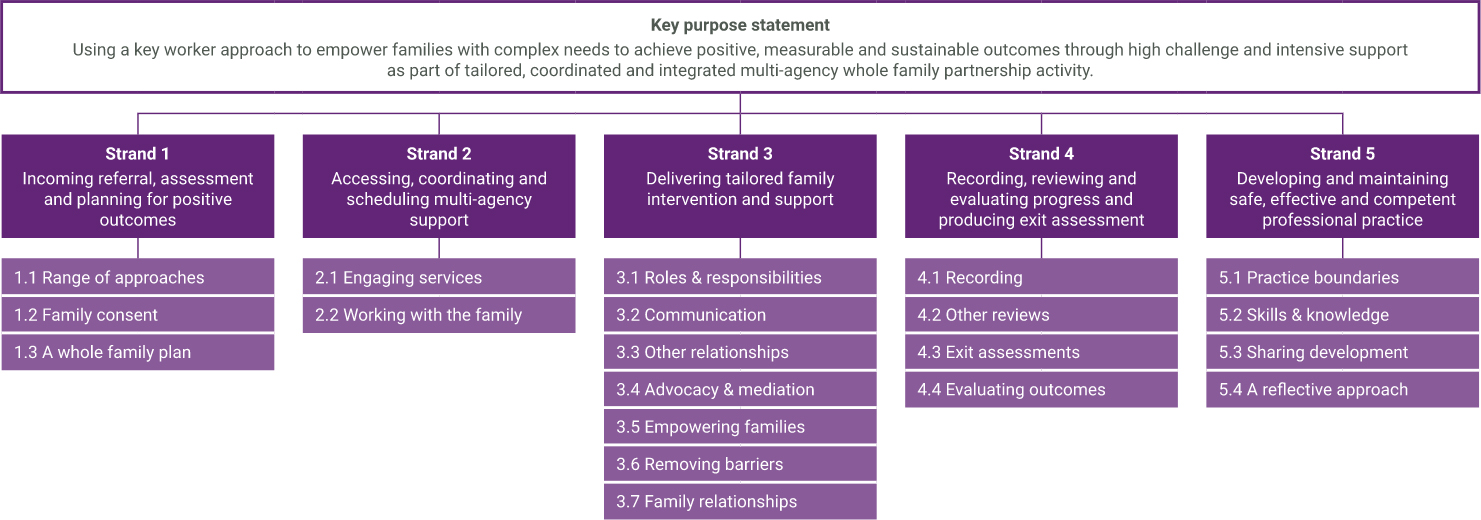Tool
Functional map: Troubled Families practitioners
A crucial first step to supporting workforce development within the Troubled Families Programme is understanding the range of functions undertaken by Troubled Families practitioners across the country. The Troubled Families Functional Map provides a snapshot of the day-to-day work of these practitioners, drawing out the core elements of these roles.
Functional map
The Troubled Families Programme works with disadvantaged families with complex needs, and is currently in its second phase. It will work with up to 400,000 families by 2020. Supporting workforce development and ‘whole family working’ is a priority for the national Troubled Families Team.
We are grateful to Chris Davison and Pat Whitby for their work to pull this map together, and to members of the steering group (Robert Berrie, Julie Menezes, Wendy Moss, Daniel Taylor and our DCLG colleagues Nicola Simpson and Sarah Kincaid) who provided valuable insight and guidance as this work developed.
What is a functional map?
A functional map is a description of the significant functions of a role. The map consists of a set of statements, beginning with a key purpose statement, and then breaks down into a series of strands describing the various functions in increasing detail.
What is a Troubled Families practitioner?
‘Troubled Families practitioner’ covers roles involved in supporting families under the government’s Troubled Families programme. Troubled Families lead or key workers are usually family support workers who take on a lead role for the family. Their role is to manage or grip the family’s problems, coordinate the delivery of services, and use a combination of support and challenge in helping families to change their behaviour.

